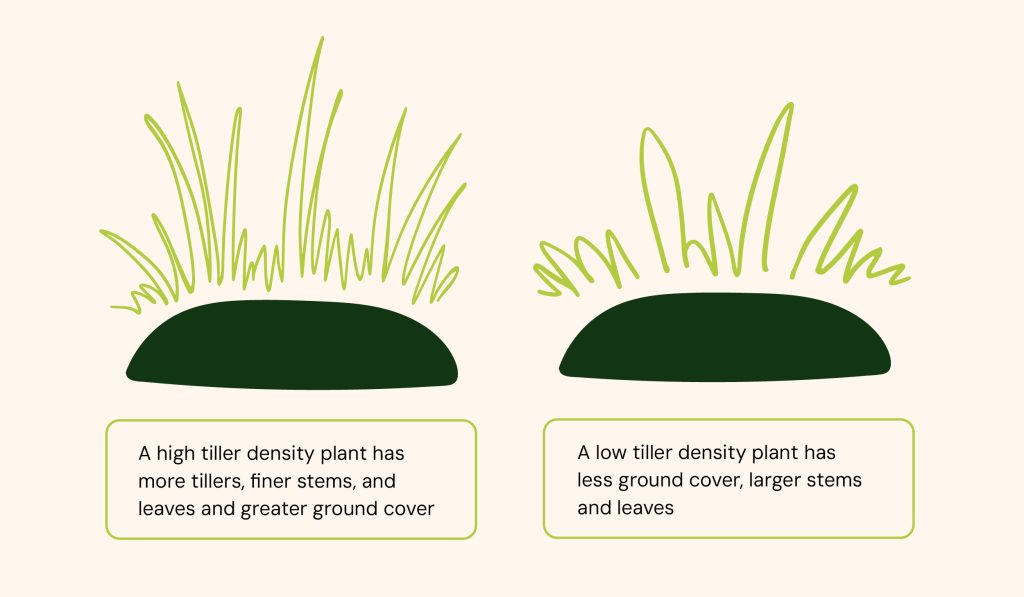The importance of tiller density
September 23, 2025 Australia
The tiller density of ryegrass pastures has a significant impact on their persistence and tolerance to grazing. A tiller is a part of the ryegrass plant that includes a stem and up to four leaves. A pasture with high tiller density is one that has relatively more stems within the same unit of area.

The role of tiller density in ryegrass persistence
In perennial ryegrass plants, new tillers are formed every year to promote persistence. In Australian conditions, these new tillers develop predominantly from autumn to spring. However, from mid-spring to autumn, very few new tillers are formed. During summer, tiller death increases due to heat and drought stress. This results in tiller density and ground cover reaching the lowest point by the “autumn break” – the time when sufficient rainfall and cooler conditions allow plants to recover.
Low ground cover at this point reduces winter productivity and makes pastures more susceptible to invasion by winter weeds such as winter grass and capeweed, which can compromise persistence. Consequently, plant breeders have observed that ryegrass breeding lines with higher tiller density tend to be more persistent. Like other breeders, our plant breeders have selected lines that exhibit high total and cool-season growth while also prioritising higher tiller density and ground cover to ensure new varieties are both productive and persistent.
Benefits for farmers and the environment
High tiller density also benefits annual and Italian ryegrasses. These species are highly productive during winter and early spring, enabling frequent grazing. This frequent grazing often occurs when soils are wet, which can damage pastures. Ryegrass pastures with higher tiller density are more resilient to grazing damage and recover more quickly by forming new tillers, ensuring sustained production later in the season.
Greater ground cover also has environmental benefits. By reducing surface runoff during rainfall, it helps minimise soil erosion and the loss of topsoil and nutrients into waterways. This improves the response of pastures to subsequent rain and supports better growth.
With our focus on tiller density and ground cover, we are confident that our ryegrass varieties will not only meet farmers’ production expectations but also maximise persistence and reduce long-term costs.
All our ryegrass products are bred with a strong focus on tiller density, but some stand out as leaders in this space.
- Almonta CM142 diploid perennial ryegrass: Specifically bred for high tiller density and sustained production, delivering excellent grazing tolerance in both dry and wet conditions.
- Kiama tetraploid annual ryegrass: An outstanding new variety designed to maximise production and profitability through vigorous growth and resilience.
These varieties combine productivity, persistence, and resilience to help farmers get the most from their pastures.
More of a fan of visual/audio than reading? Check out this video with AlfaGen Seeds Technical Services Manager, Gavin Milne, explaining the importance of tiller density at one of our trial sites in Ebor, NSW.